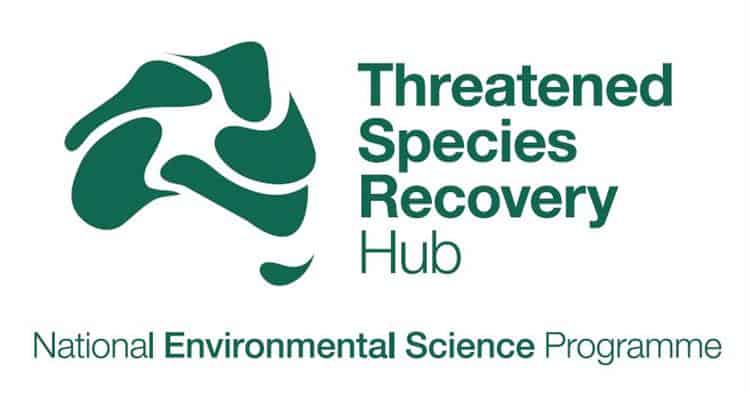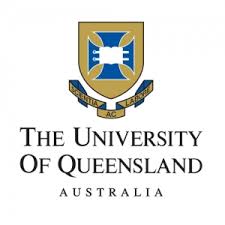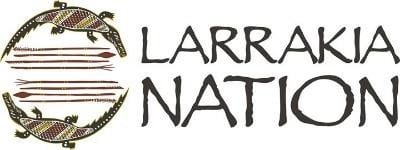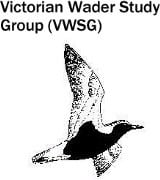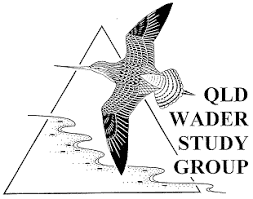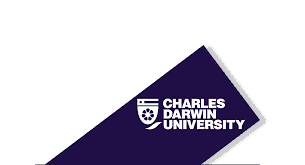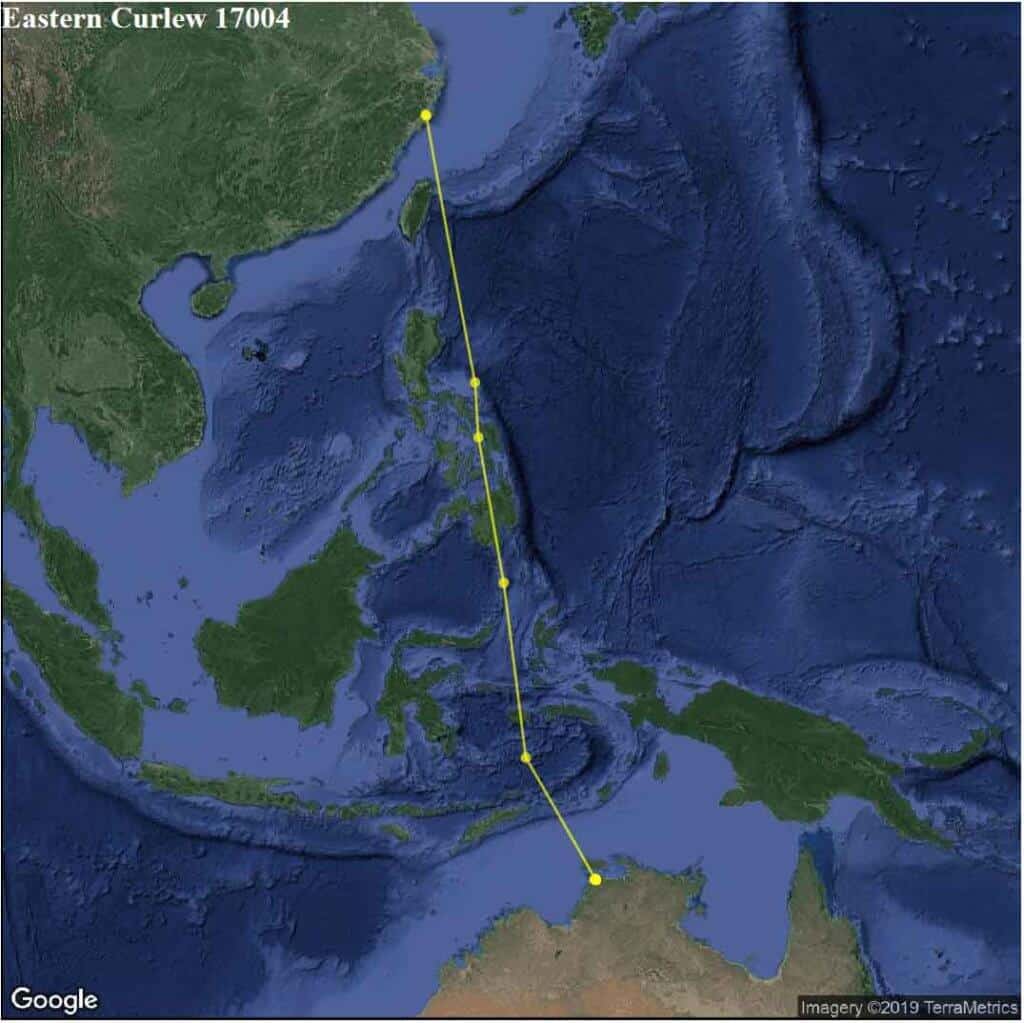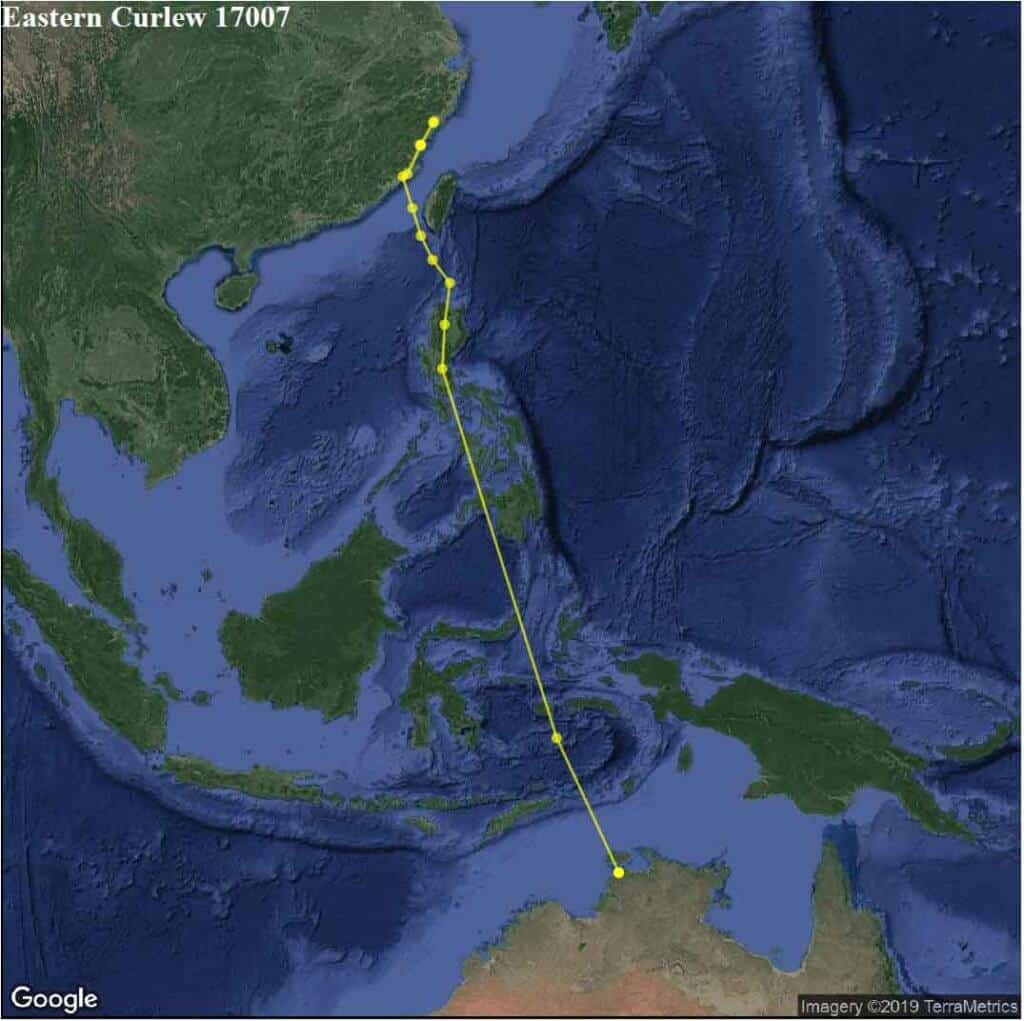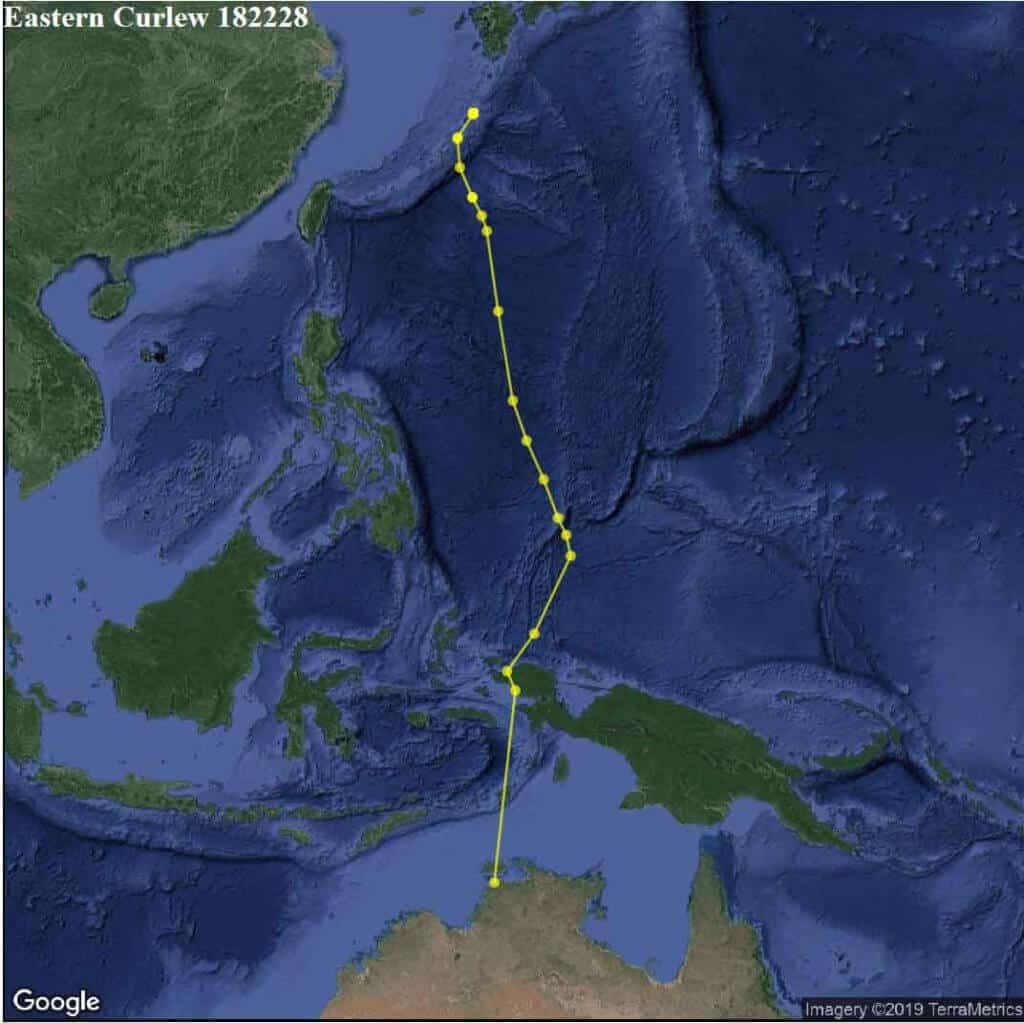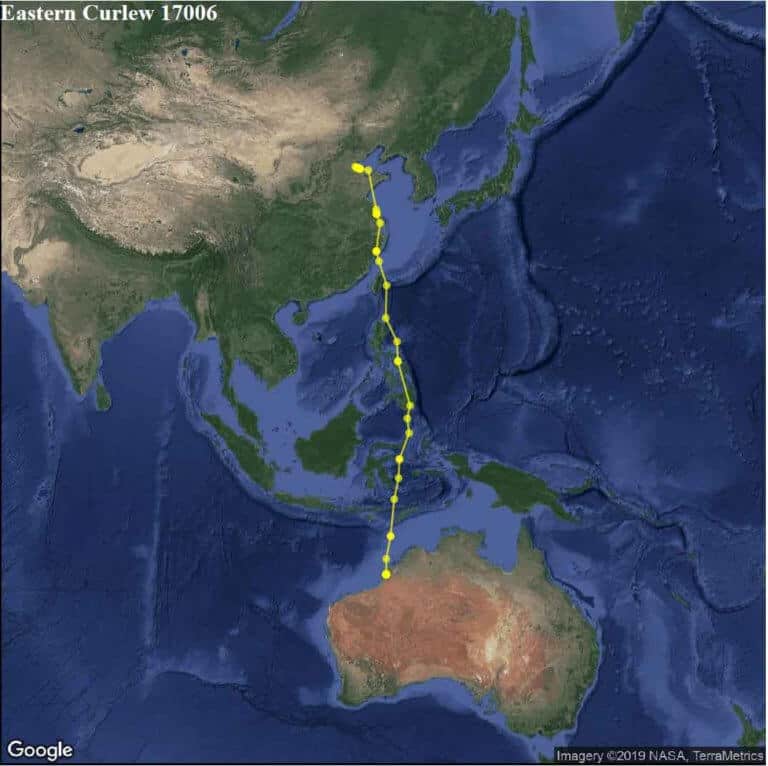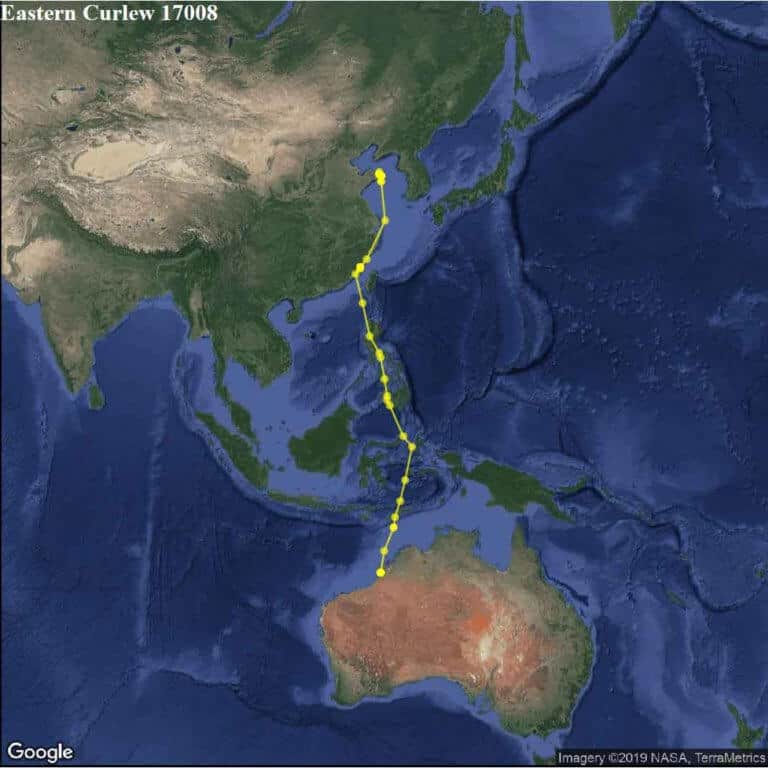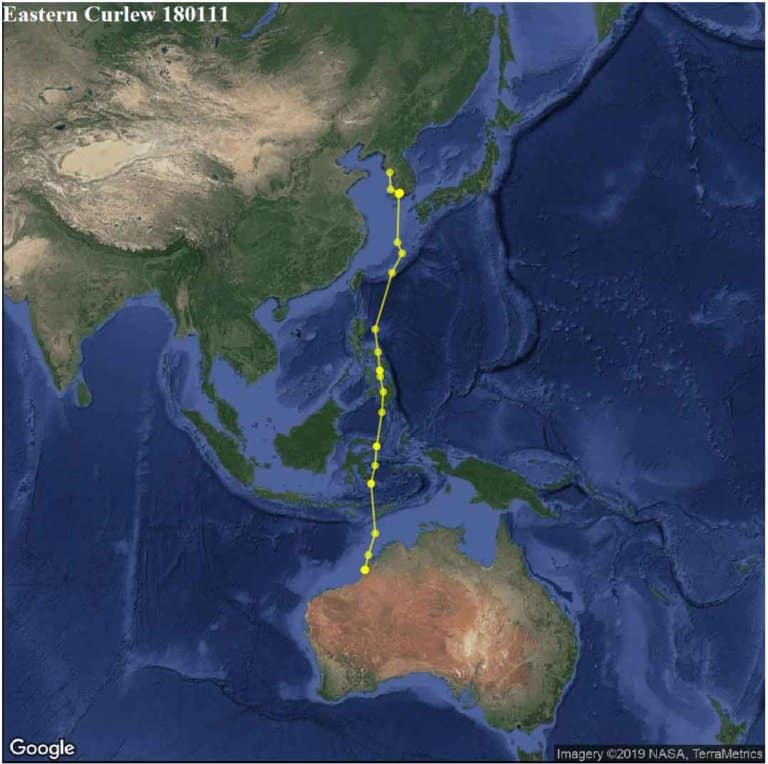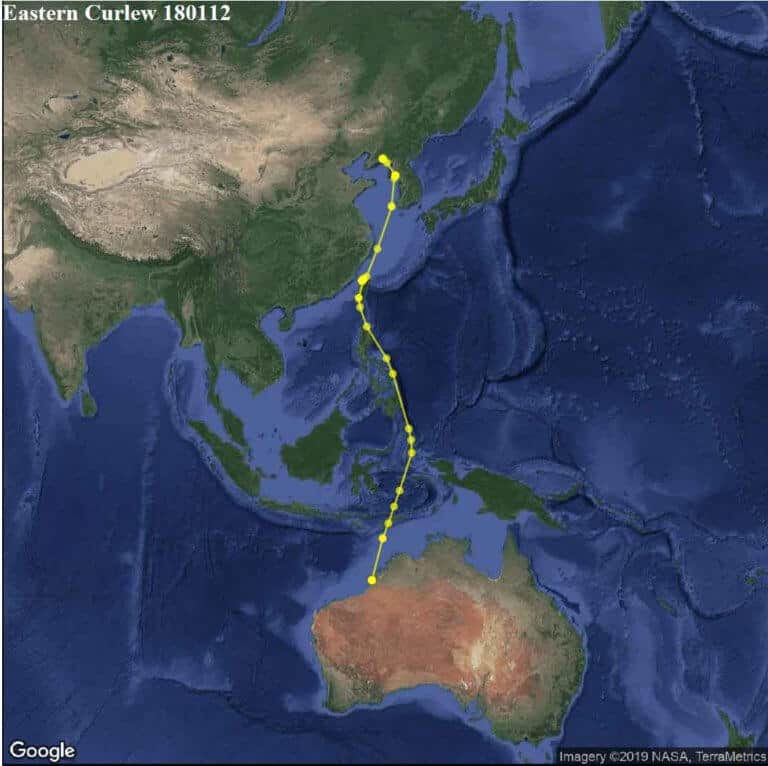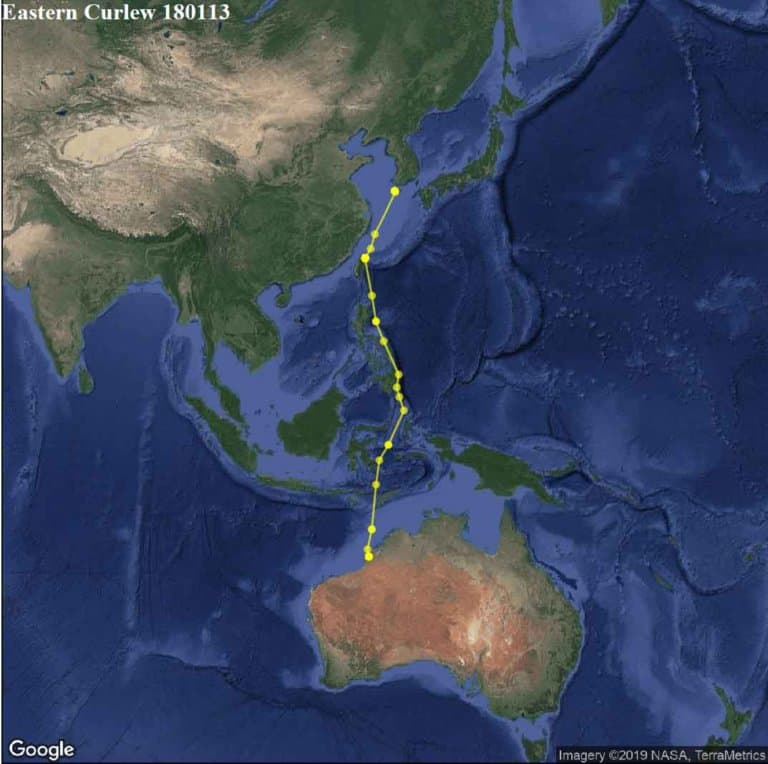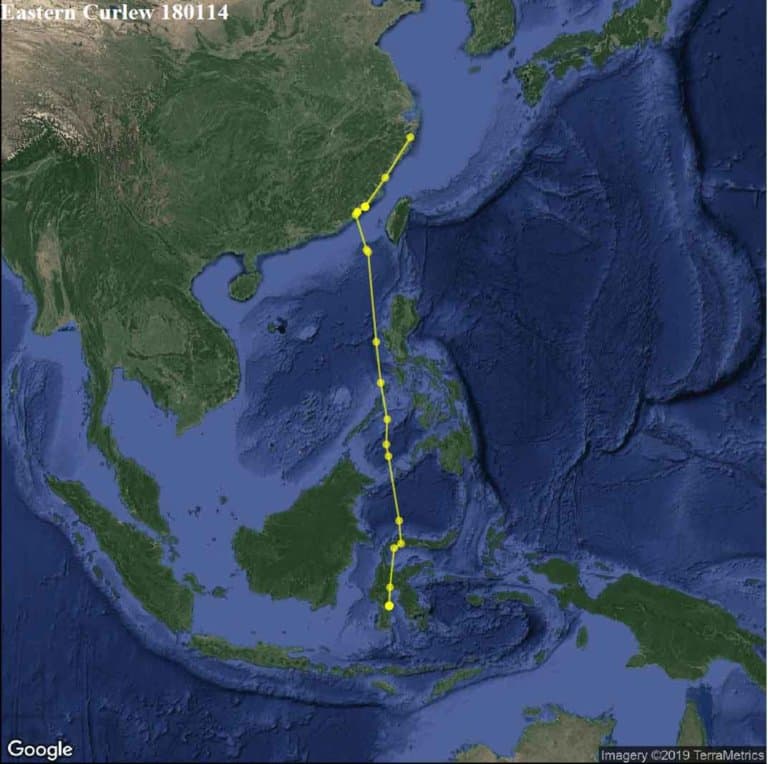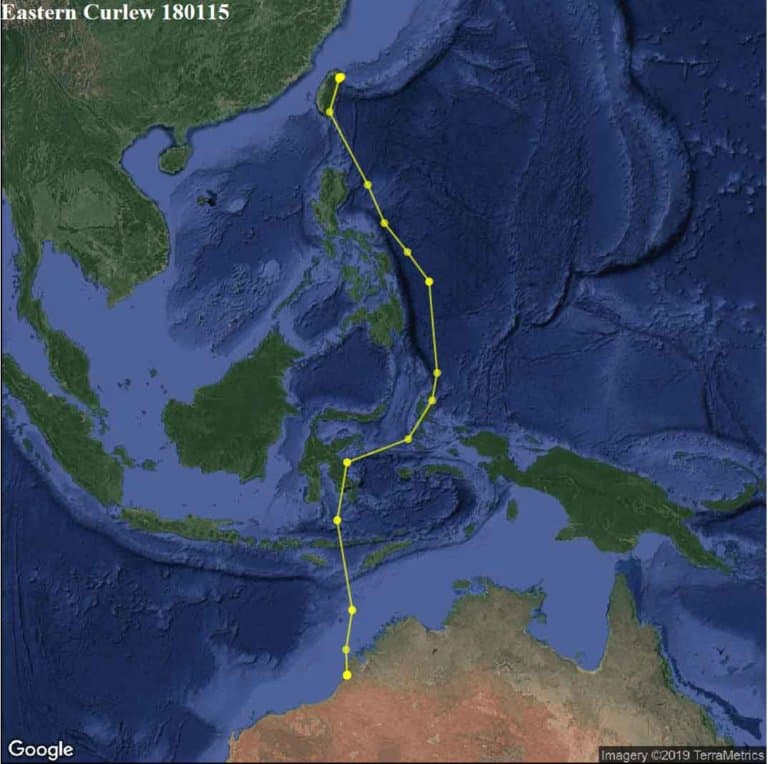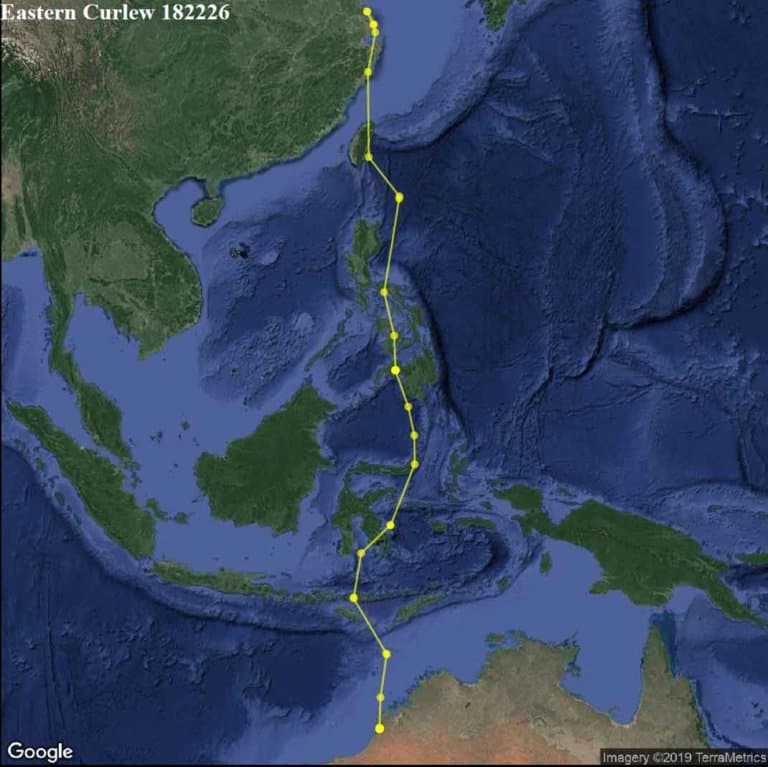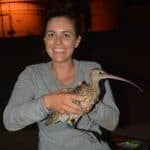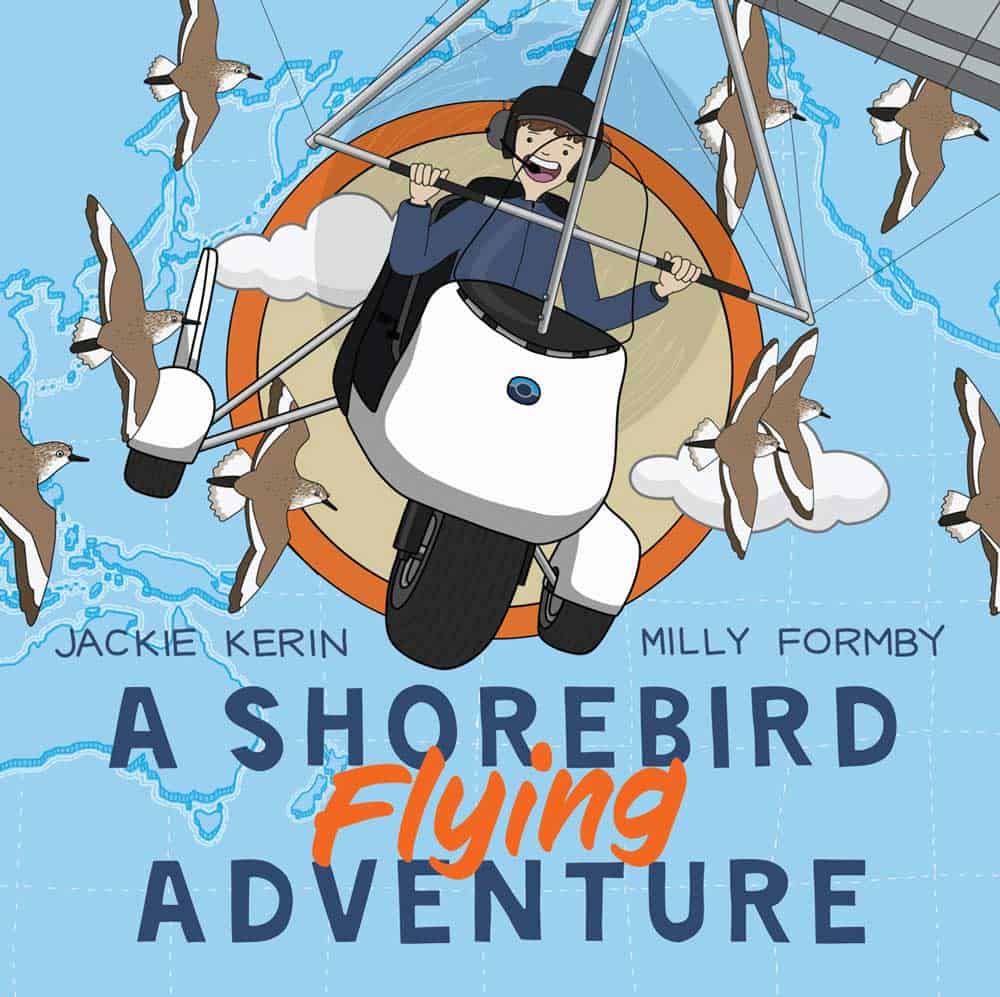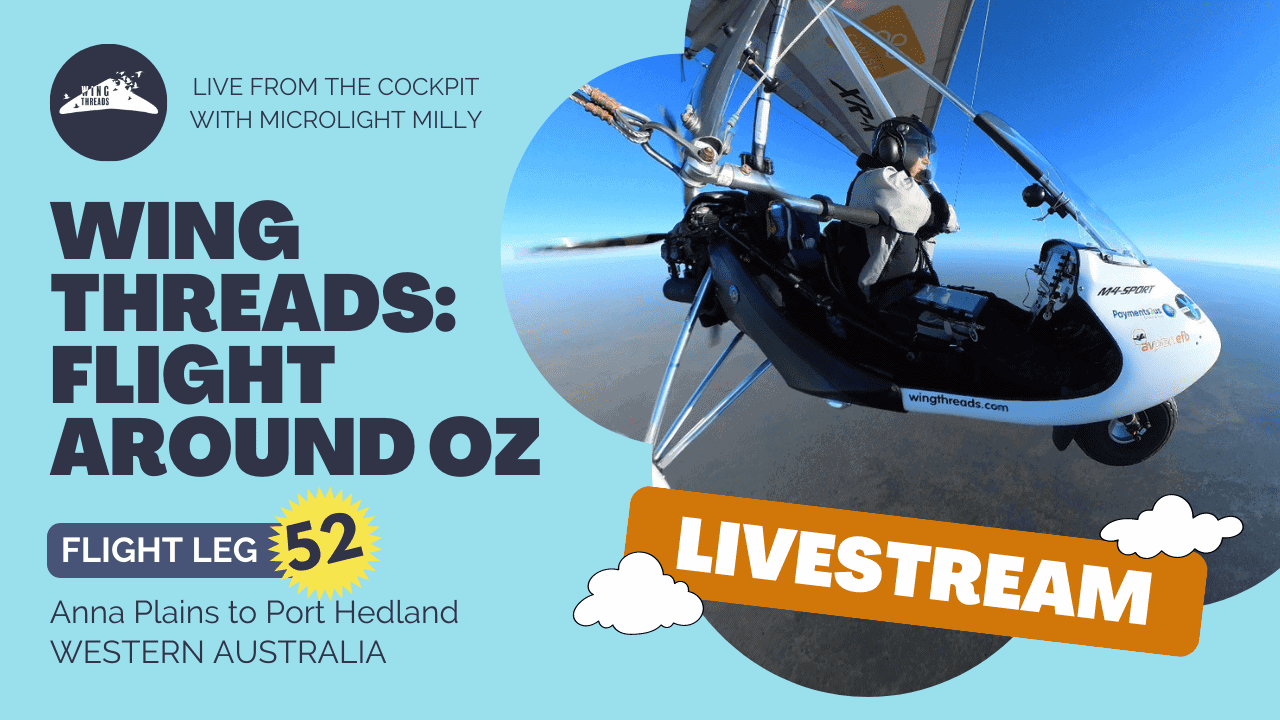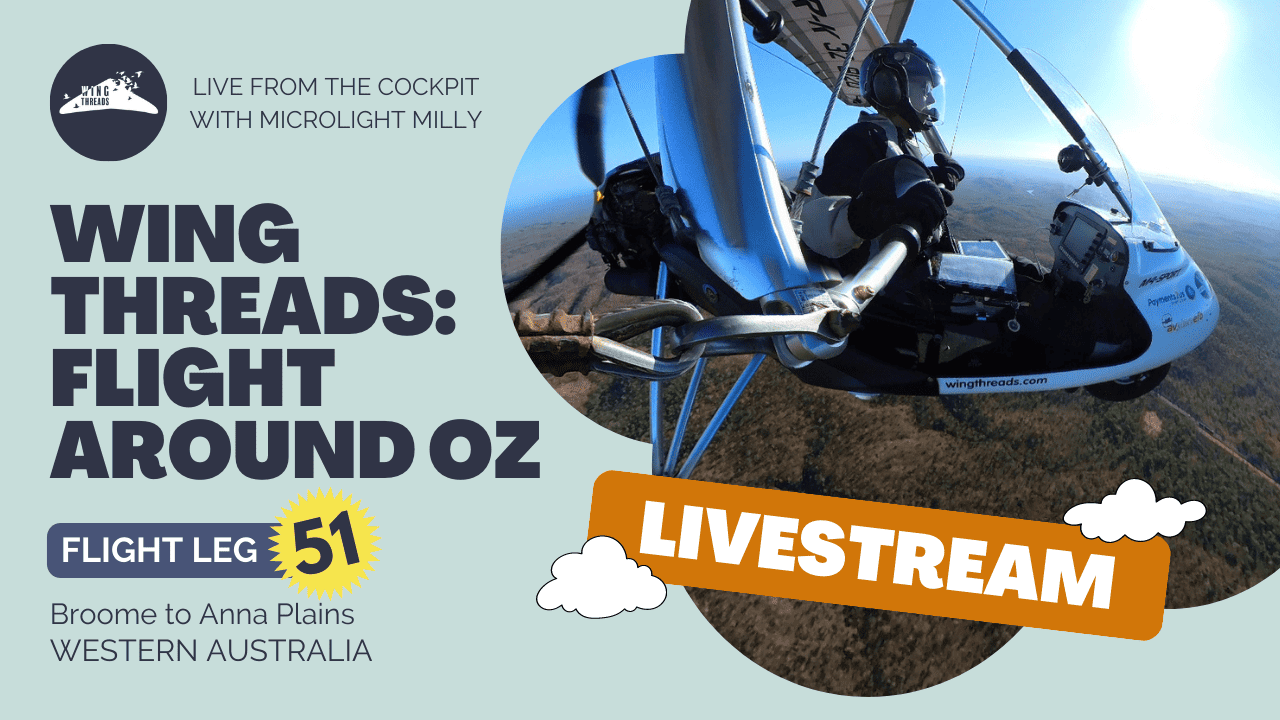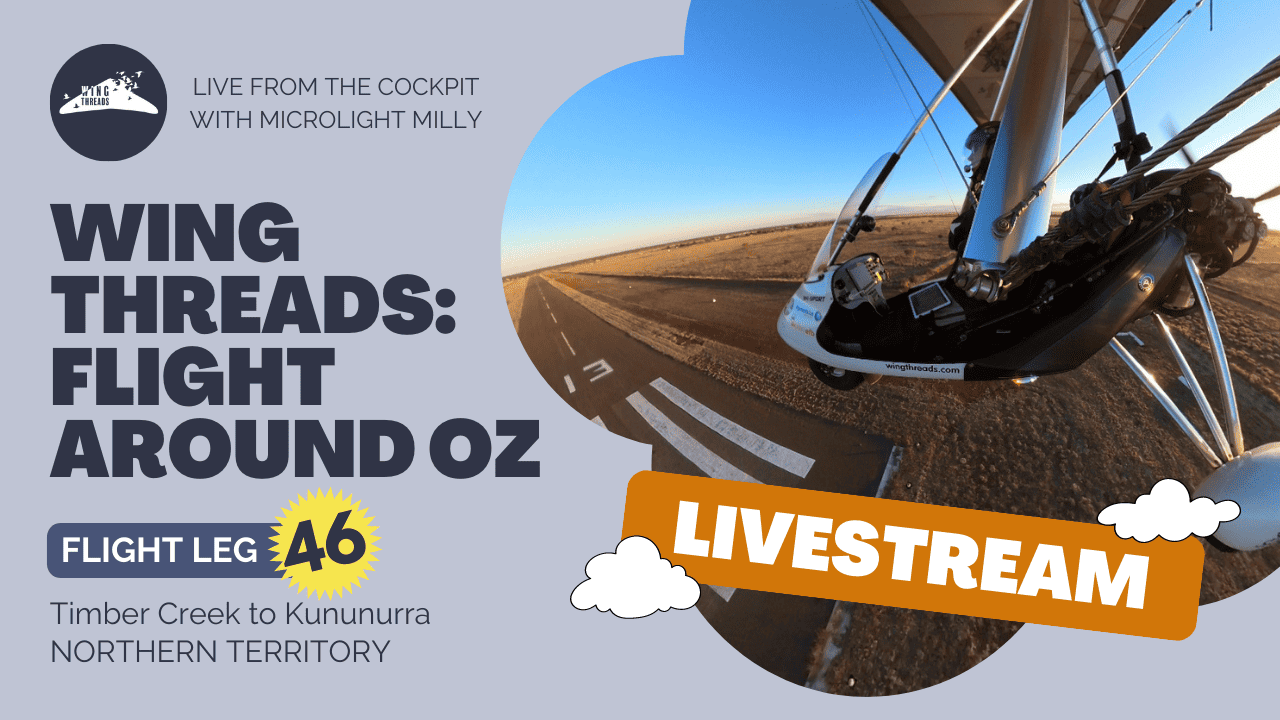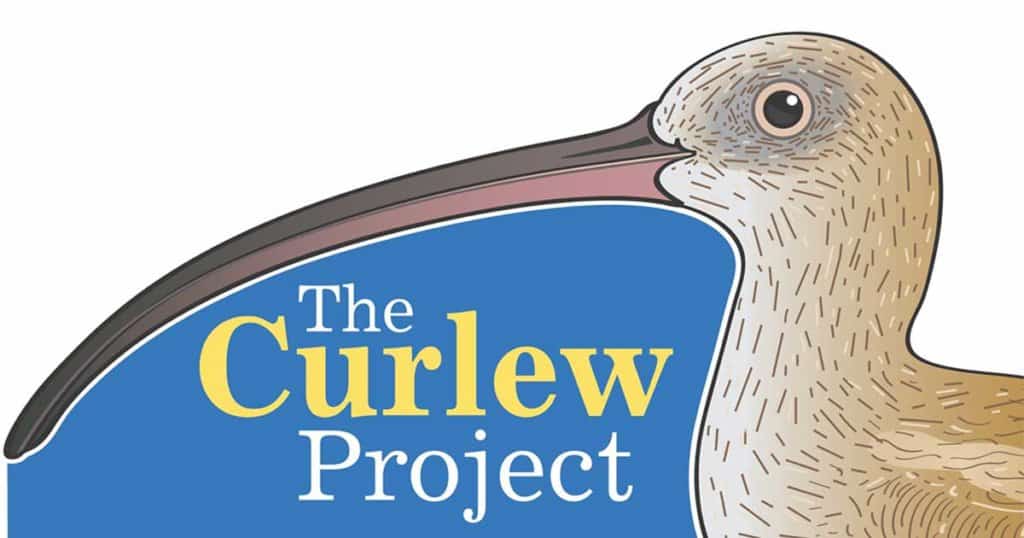
This document shows the movements of 22 Far Eastern Curlew tagged during the non-breeding seasons of 2018 and 2019 at four sites across Australia: Darwin Harbour (NT), Broome (WA), Moreton Bay (QLD), and Western Port (VIC).
The map below shows the flyway-scale movements of all curlew beginning on 2019-01-01. Please note that all maps show raw location data which have undergone no or minimal filtering for accuracy.
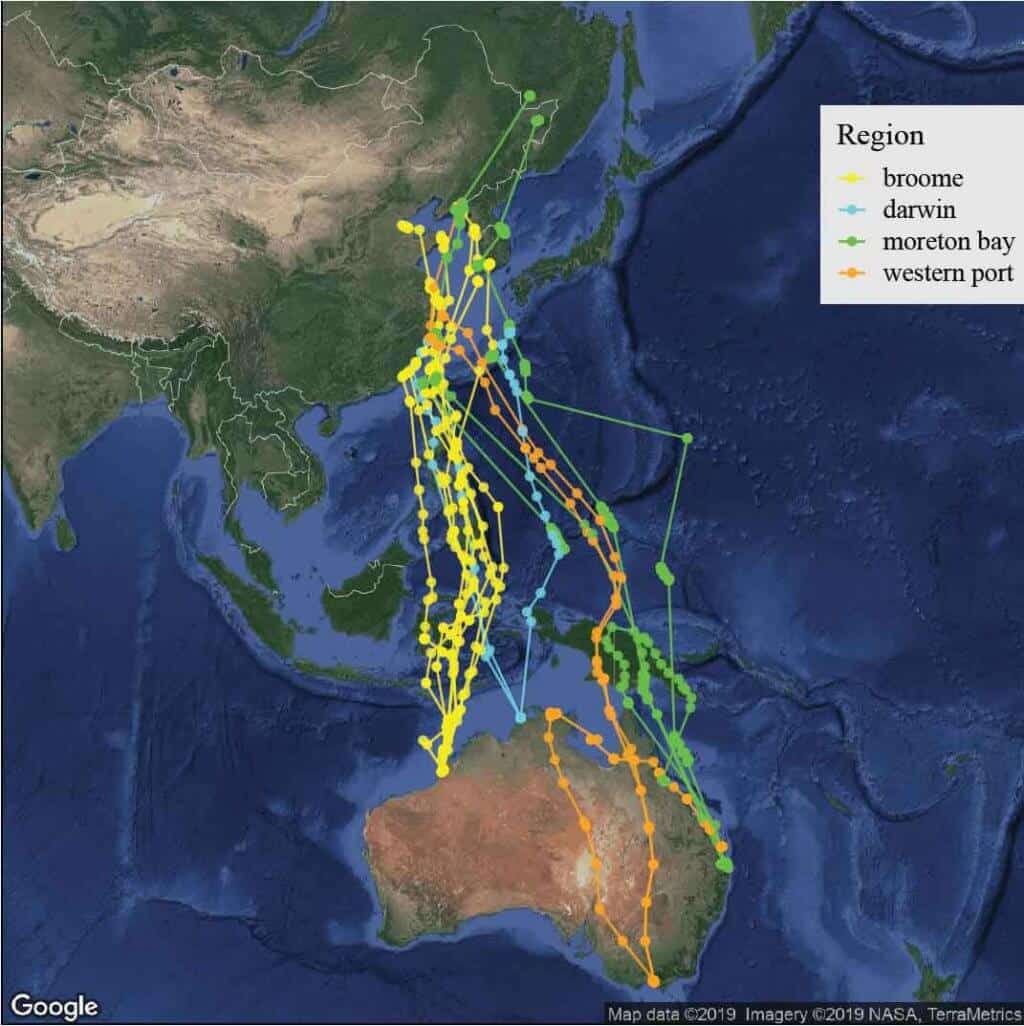
Curlew commutations
FAR EASTERN CURLEWS IN Darwin, Northern Territory
All three Curlews, AMANDA, DAMIEN and GAVIN, have followed similar flight paths north to China and the southern islands of Japan.
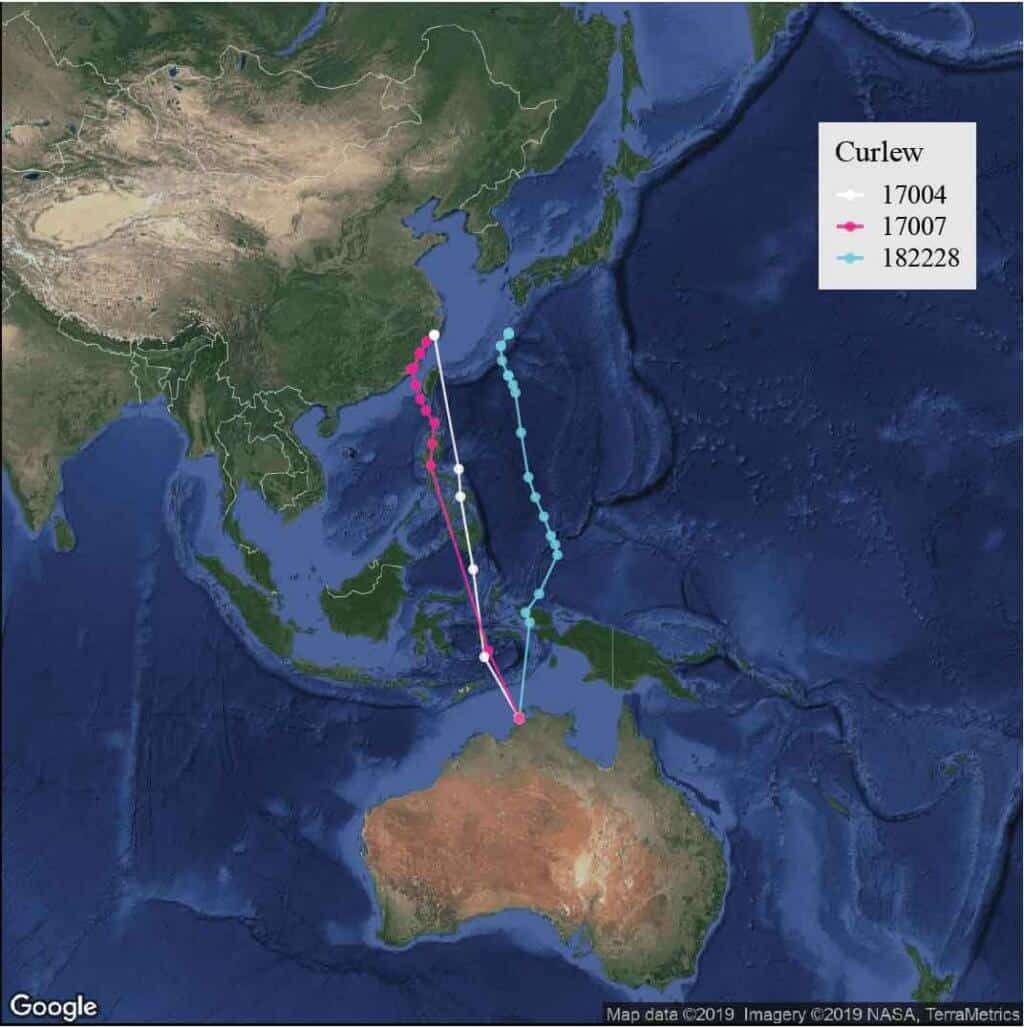
Far Eastern Curlews in Broome, Western Australia
Like our Northern Territory Curlews, all of the Far Eastern Curlews tagged in Broome have followed similar flight paths and are now located in different parts of the Yellow Sea, with the exception of Milly, which is in Taiwan.
Far Eastern Curlews in Moreton Bay, Queensland
Two of our Curlews tagged in Queensland are currently the furthest north on migration of all 22 birds.
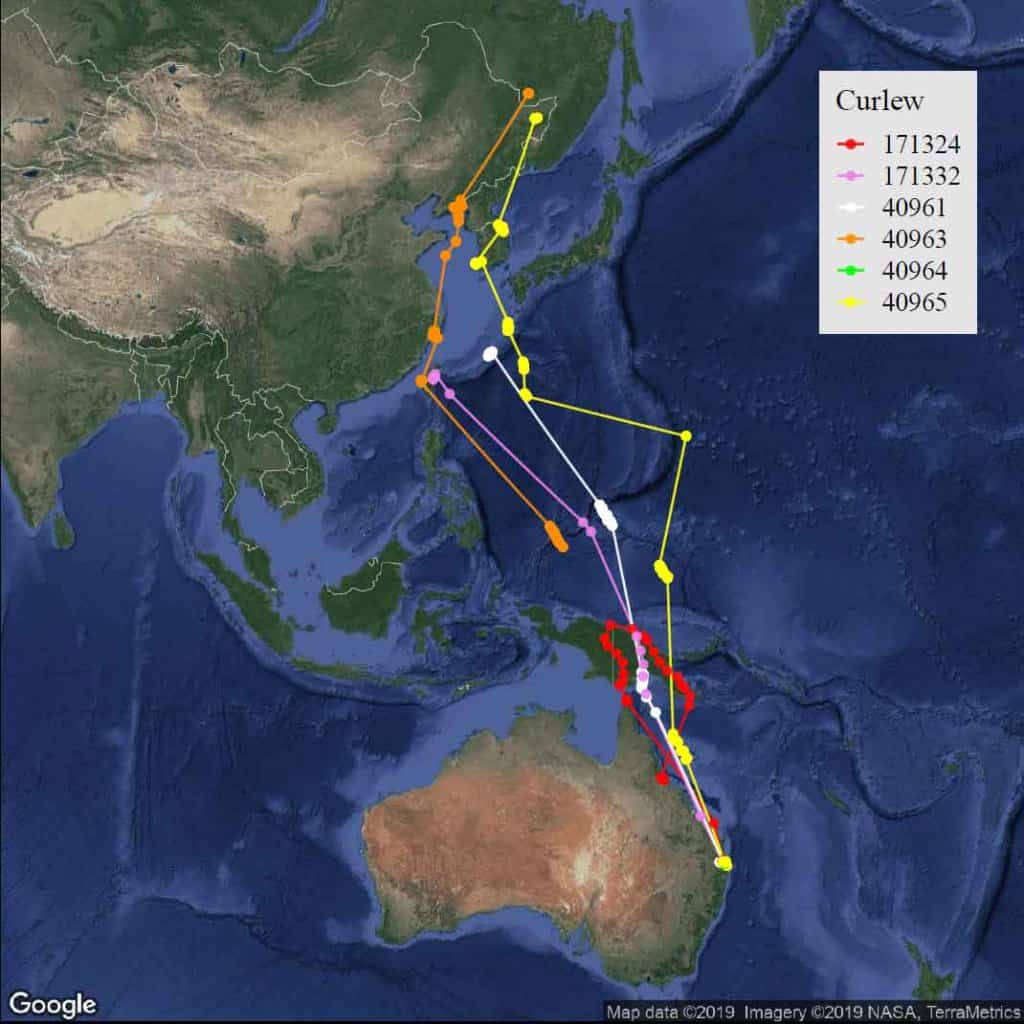
GPS Tag 40963 (green leg flag AAD) – captured at Toorbul Wader Roost, 26th March, 2017
After a two-week stopover on the coast of North Korea, just east of the Yalu River, 40963 now appears to have arrived at its breeding area in southeastern Russia, the same area it occupied during the 2018 breeding season.
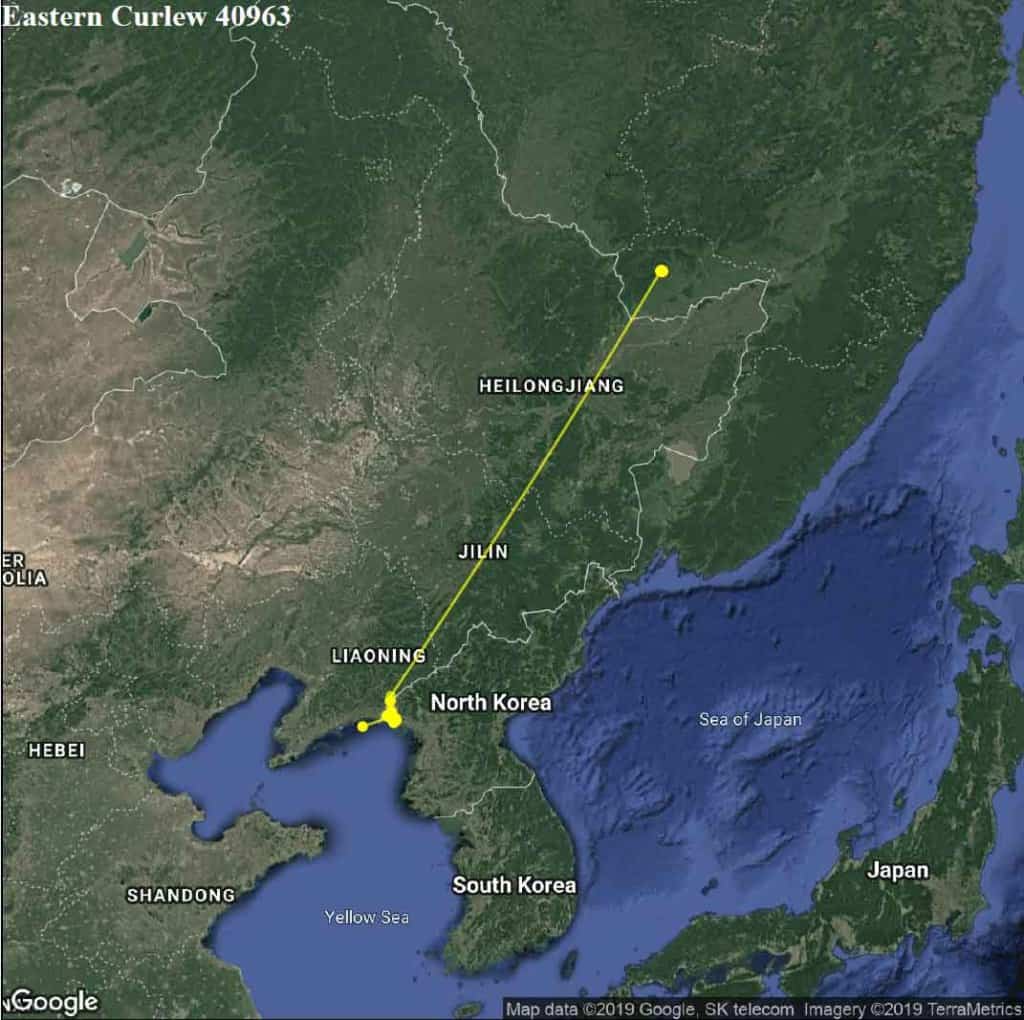
GPS Tag 40965 (green leg flag AAK) – captured at Geoff Skinner Wetlands, 26th March, 2017
Curlew 40965 is being tracked for the second consecutive year after completing a round trip journey to its breeding grounds and back in 2018.
As in 2018, 40965 spent the non-breeding season in Australia moving between Geoff Skinner Wetlands on the Brisbane side of Moreton Bay and Dunwich on North Stradbroke Island, with periodic visits to Peel and Goat Islands in between. The bird departed Moreton Bay on 11th March, 2019 before being re-detected ~300 km offshore to the east of Cairns on the 14 March, 2019. The bird made landfall on Amami, Japan on 21st March, 2019.
After departing Amami, 40965 made two more stops on the southwestern and north- eastern coasts of South Korea and now appears to have reached its breeding area in northeastern China, the same area it occupied during the 2018 breeding season.
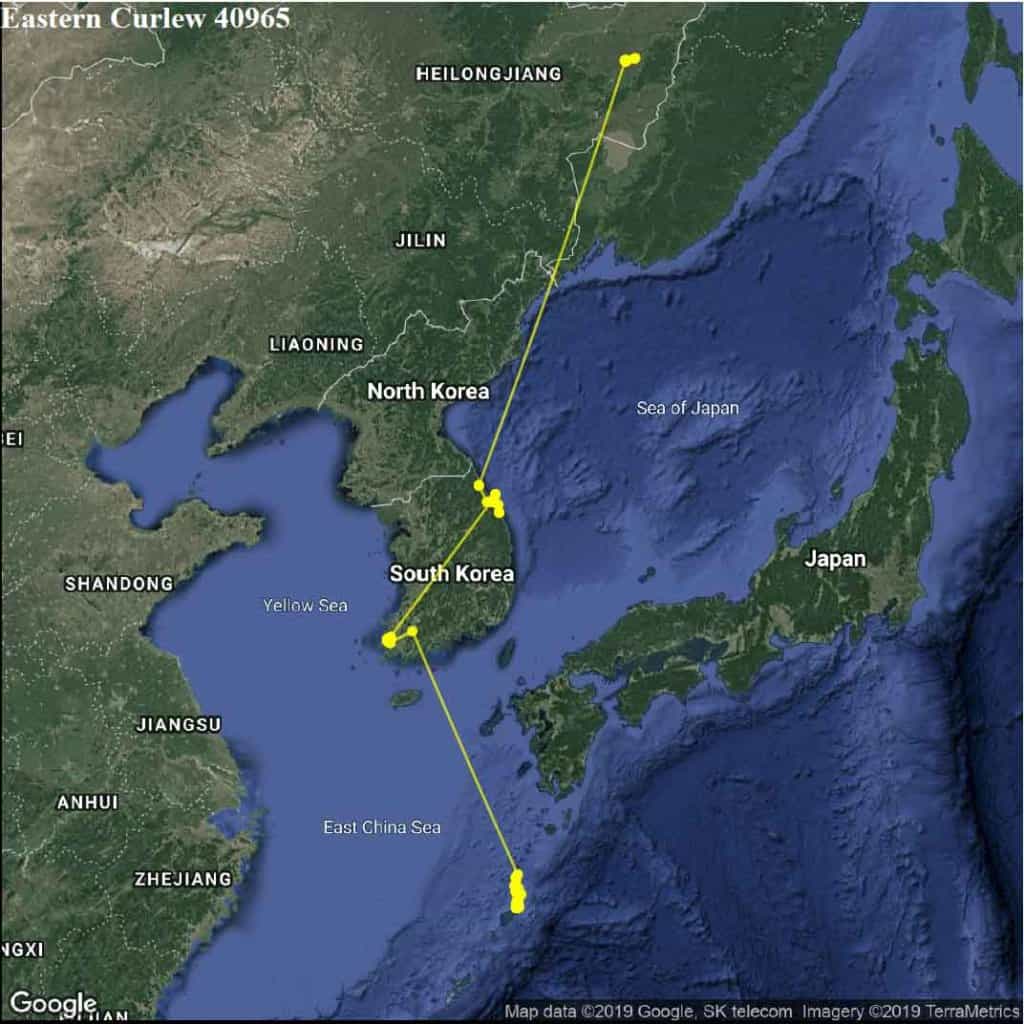
GPS Tag 40964 (green leg flag AAJ) – captured as a sub-adult bird at Geoff Skinner Wetlands, 3rd March, 2018
40964 stayed in Moreton Bay for all of 2018, forgoing migration to the breeding grounds.
It is currently remaining in Moreton Bay, moving between Wellington Pt, the western coast of North Stradbroke Island and MacLeay Island.
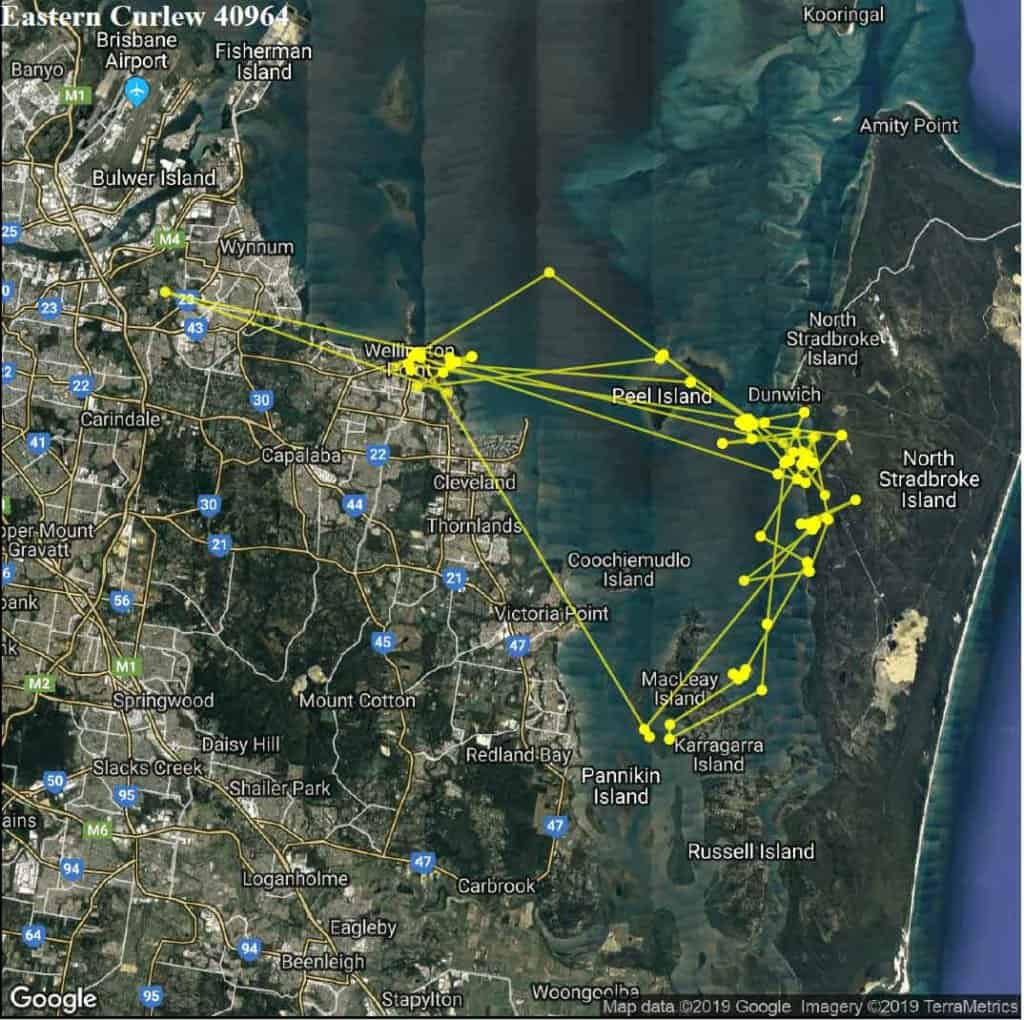
GPS Tag 40961 (green leg flag AAL) – captured at Manly Wader Roost, 13th January, 2019
40961 is currently stopping over on the southern coast of Okinawa, Japan.
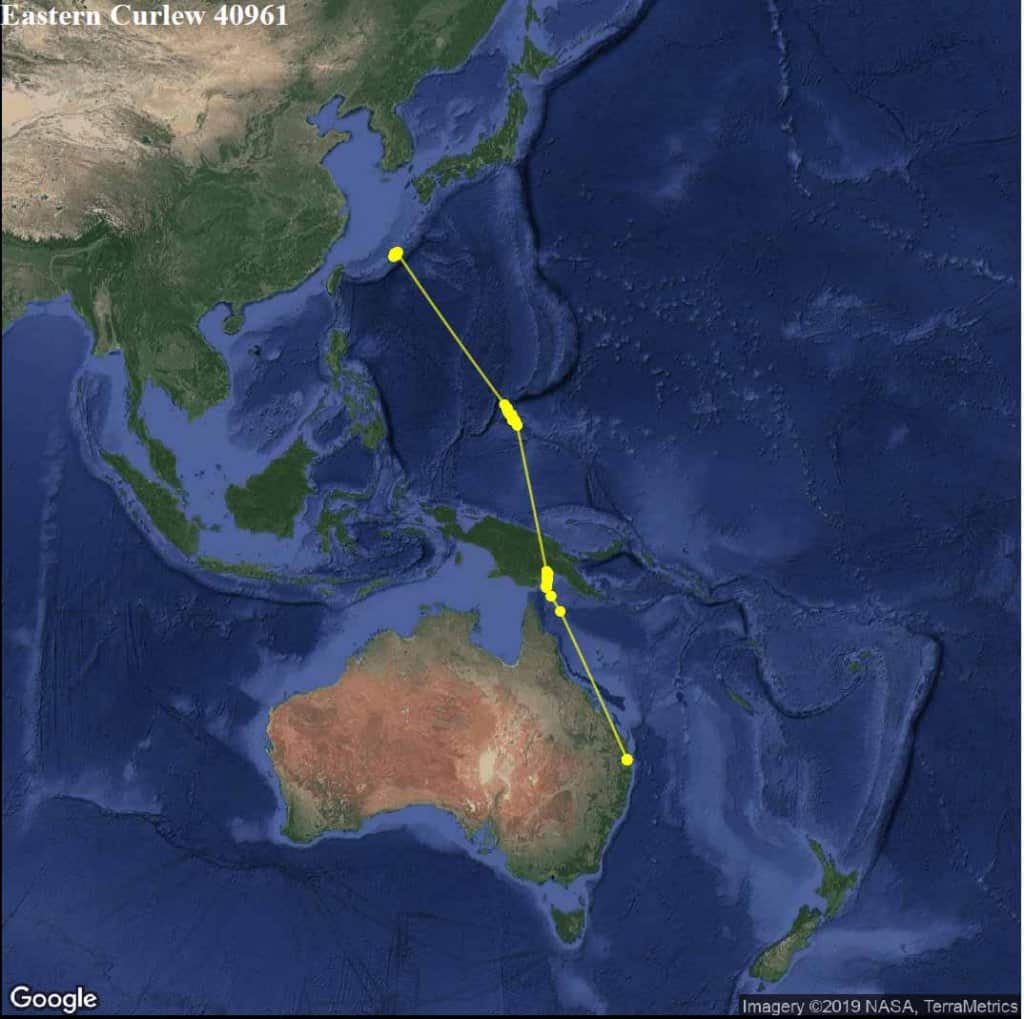
GPS Tag 171324 (green leg flag AAP) – captured at Manly Wader Roost, 13th January, 2019
After departing Moreton Bay, 171324 encountered strong headwinds from Cyclone Trevor as it headed north and was temporarily grounded on Cape York. After the cyclone passed it resumed northward migration, reaching the north coast of Papua New Guinea, but then circled around and returned to Queensland. The bird was last detected in Townsville.
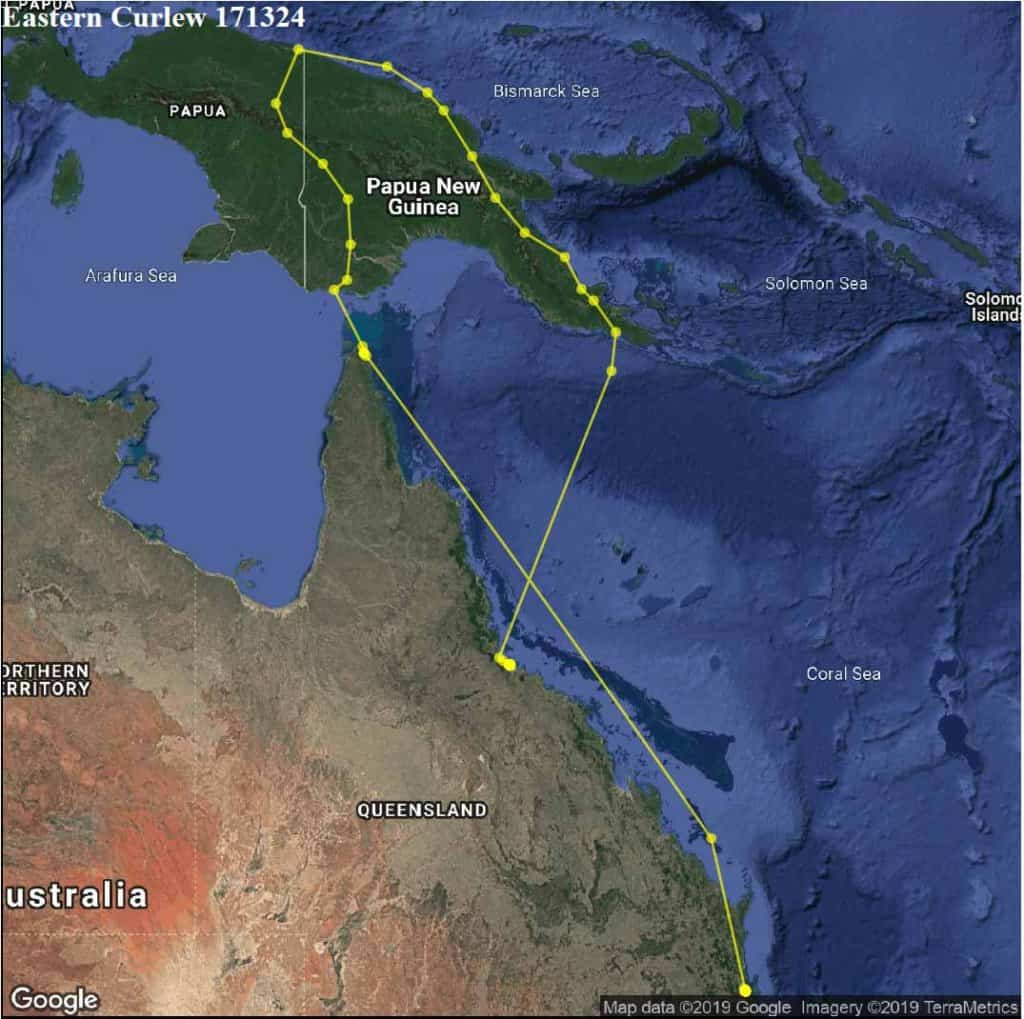
GPS Tag 171332 (green leg flag AAN) – captured at Manly Wader Roost, 13th January, 2019
After departing Moreton Bay, flying over Papua New Guinea, and crossing the Pacific, 171332 made landfall in eastern Taiwan.
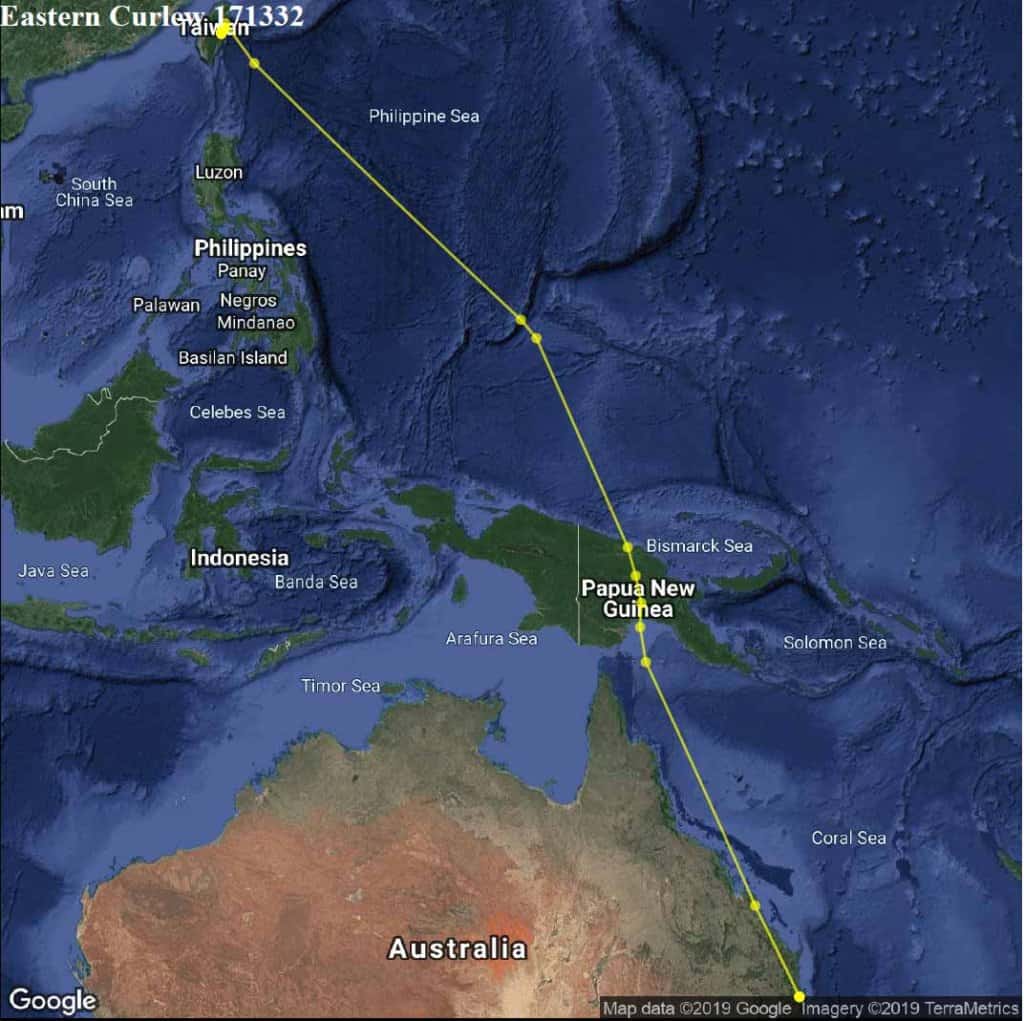
GPS Tag 171323 (green leg flag AAN) – captured at Geoff Skinner Wetlands, Wellington Point, 3rd March, 2018
The bird was tracked to Okinawa, Japan where it stopped over for several days before its tracking device unfortunately fell off. The bird was later spotted alive and well at Manly Wader Roost in October 2018 by Arthur Keates.
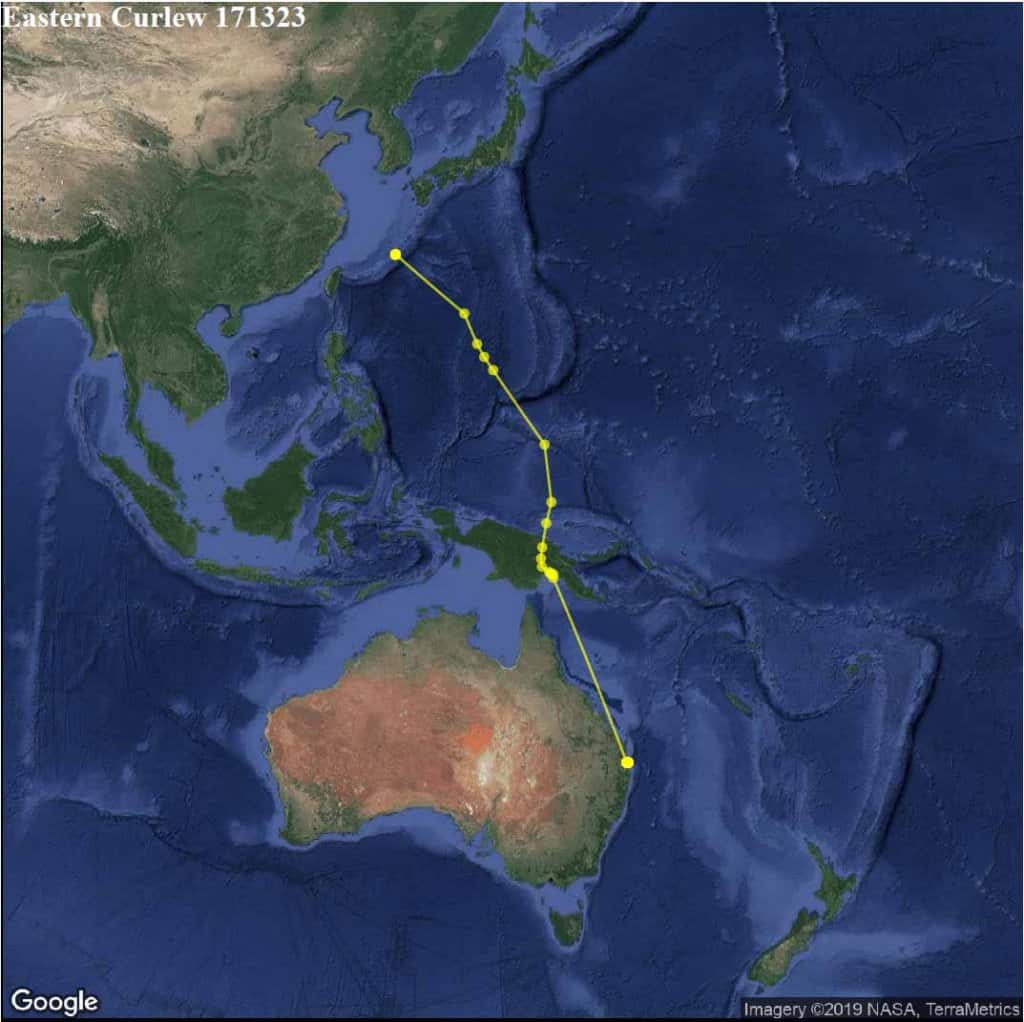
Far eastern Curlews in Koo Wee Rup, Victoria
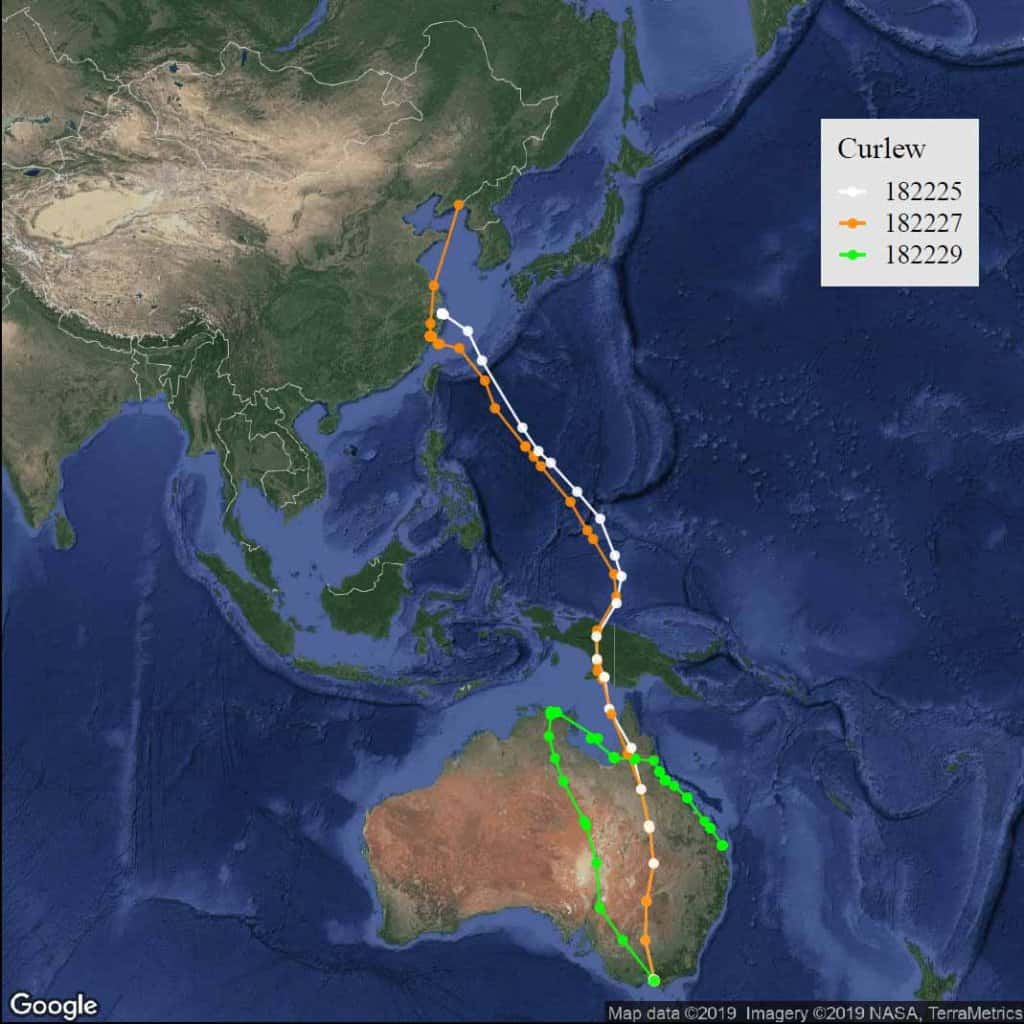
Two of the Curlew from Victoria – KOO and WEE – are still positioned on the Yellow Sea in China.
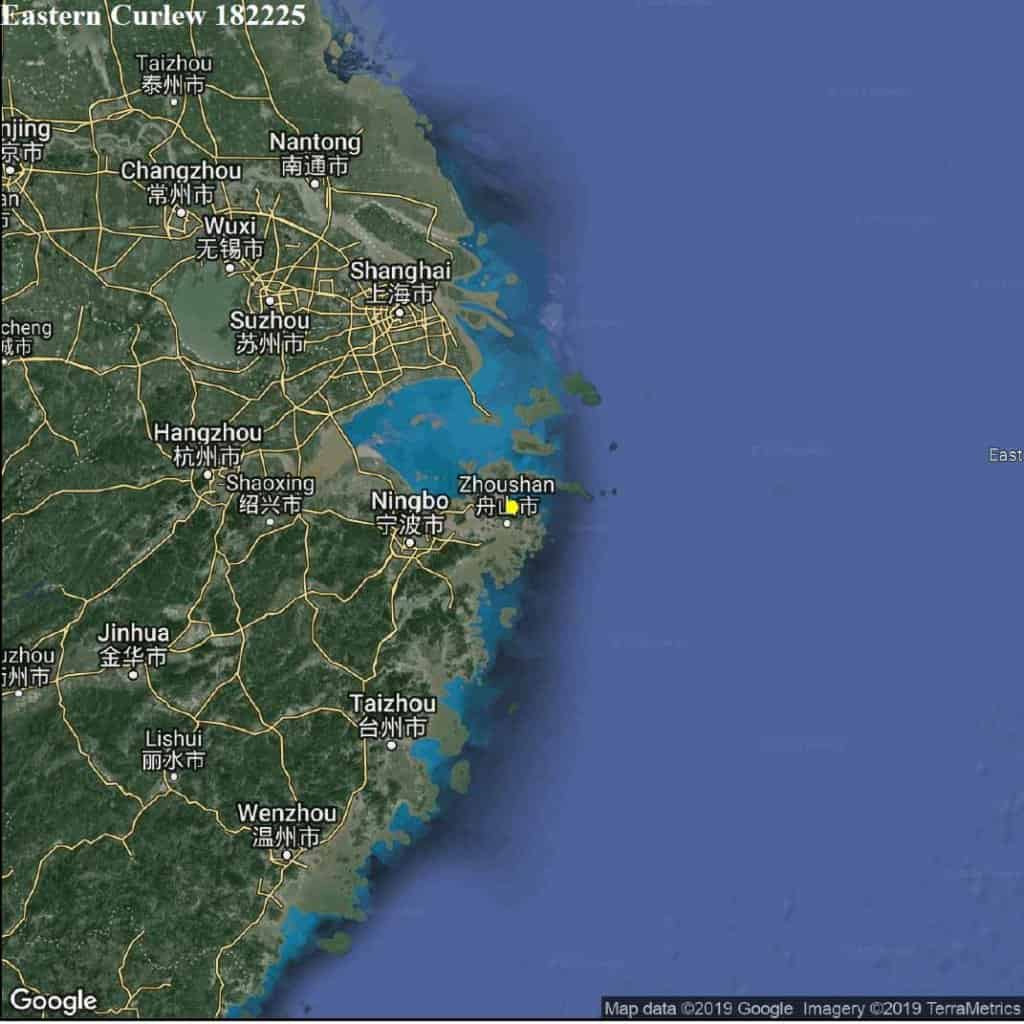
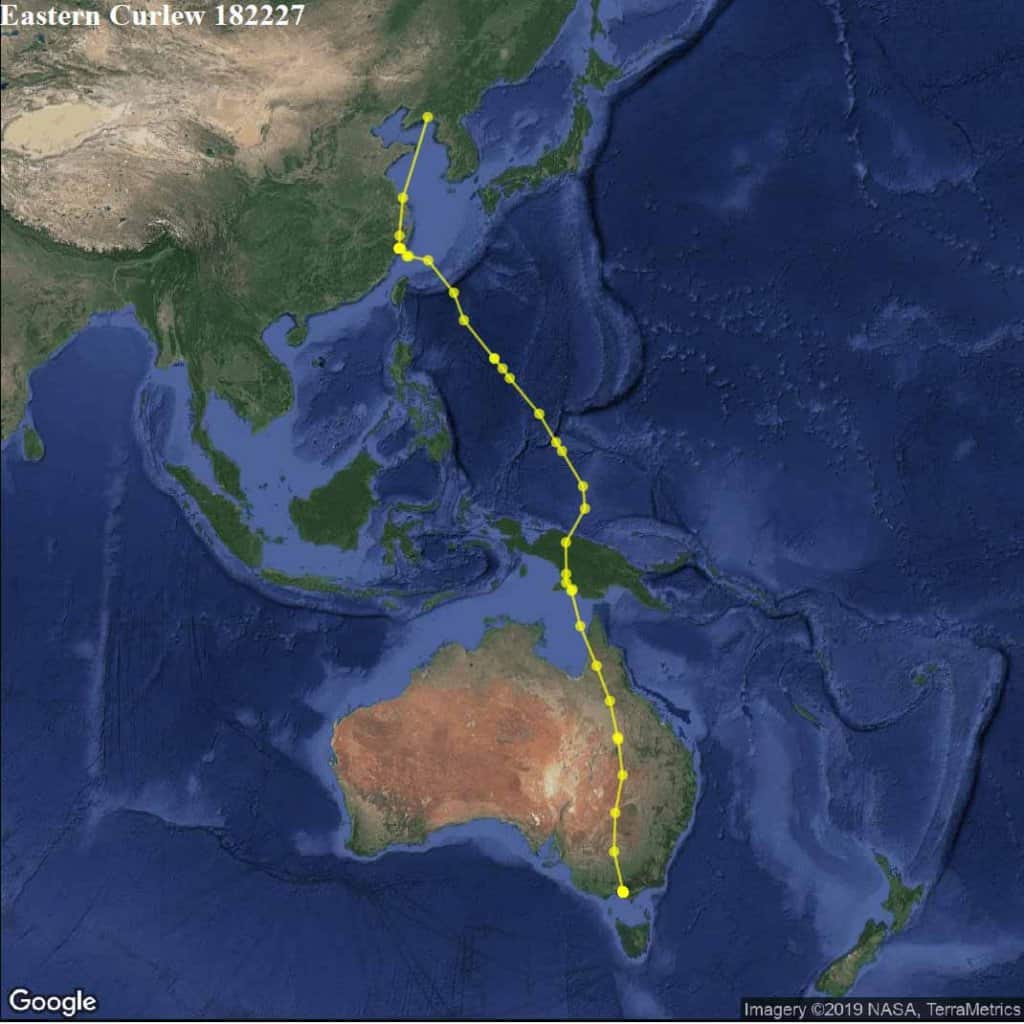
After avoiding Tropical Cyclone Trevor on 22nd March, the third Curlew from Victoria, RUP, has continued to head further south towards Queensland’s Sunshine Coast.
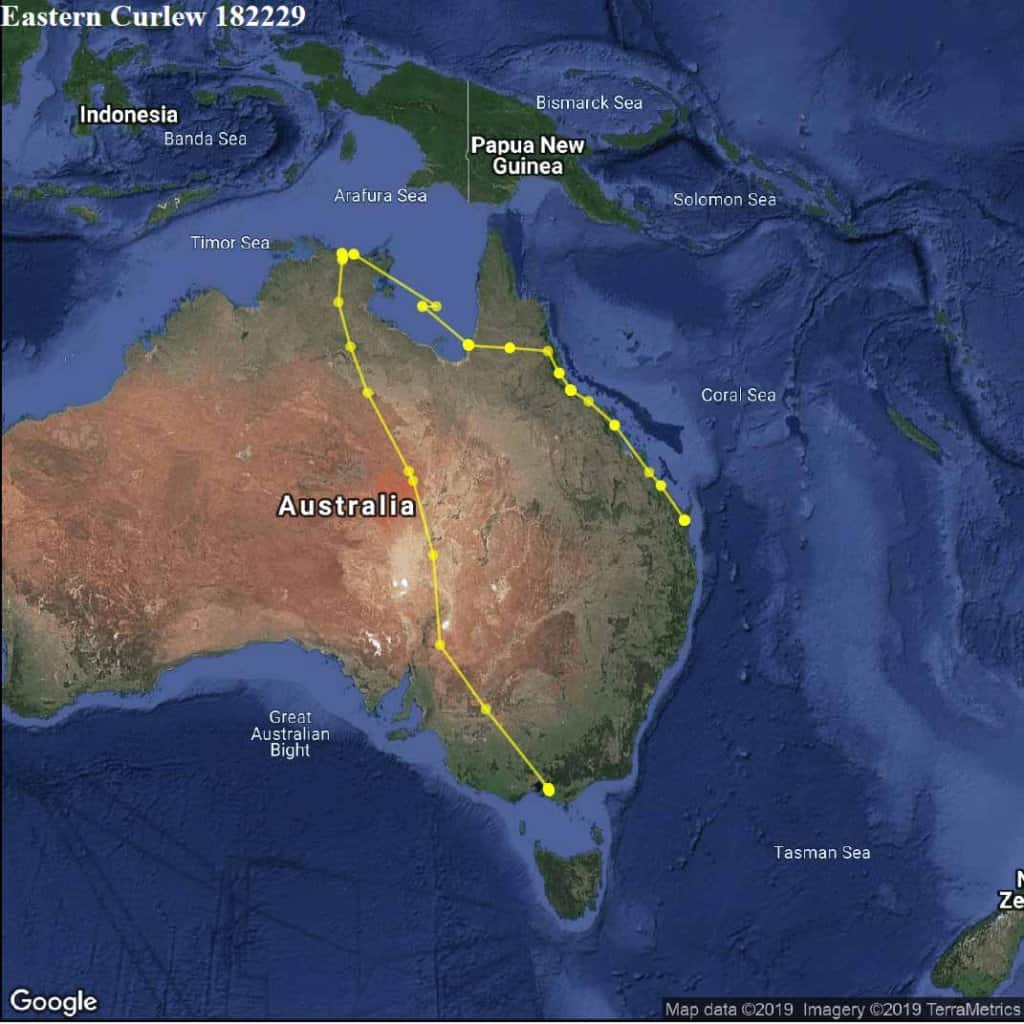
Acknowledgements
Thanks go to the National Environment Science Programme Threatened Species Recovery Hub, Darwin Port, Larrakia Nation and the Larrakia Indigenous People whose land we work on, The Australasian Wader Studies Group, The Victorian Wader Study Group, the Queensland Wader Study Group, Wader Quest, Charles Darwin University, the University of Queensland, the Quandamooka People, the Boon Wurrung People, the Yawuru People via the offices of Nyamba Buru Yawuru Limited for permission to catch birds on the shores of Roebuck Bay, traditional lands of the Yawuru people, and all the enthusiastic volunteers that put their time into catching and resighting birds.
To learn more about the Far Eastern Curlew Project, visit the Threatened Species Recovery Hub.

